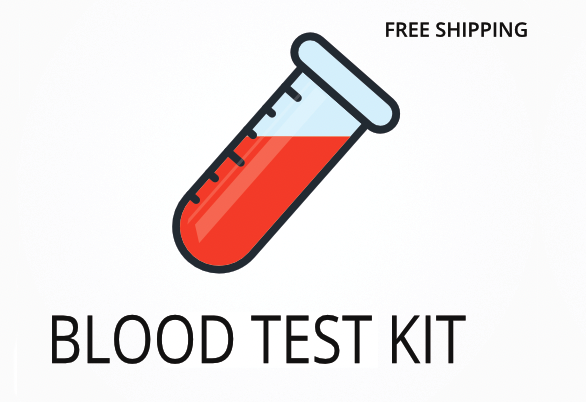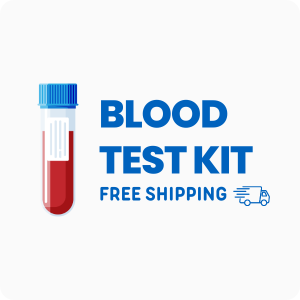Ordering the Gluten Proteome + Free Celiac Disease Screen | Cyrex Labs Array #3X
Ordering the Gluten Proteome + Free Celiac Disease Screen from Cyrex Labs helps identify a wide range of immune reactions to gluten and wheat proteins, not just the common alpha-gliadin marker. This test can detect gluten-related immune responses that may be missed by standard blood tests, providing a more complete picture for those with ongoing symptoms. Interestingly, this panel also checks for gluten-derived opioids that may affect mood and behavior, which is not included in most gluten sensitivity tests.
Ordering this test offers several specific benefits:
- Detects immune responses to 12 different wheat and gluten proteins, reducing the chance of false negatives.
- Includes a free celiac disease screening panel for a more thorough assessment.
- Identifies gluten-related reactions that may impact the brain and nervous system.
- Helps clarify if symptoms are due to gluten intolerance, celiac disease, or another wheat-related issue.
- Provides results you can share with your doctor to guide next steps in care.
Who Should Consider Gluten and Wheat Immune Response Testing
People who have ongoing digestive issues, skin rashes, or unexplained fatigue after eating foods with wheat or gluten may benefit from this test. For example, someone who has tried a gluten-free diet but still experiences bloating and brain fog might want to know if other wheat proteins are causing their symptoms.
Ordering this test may also be helpful in these situations:
- Digestive discomfort, such as bloating or diarrhea, that does not improve with standard treatments
- Unexplained joint pain or inflammation after eating bread, pasta, or baked goods
- Recurring skin rashes or eczema that seem to flare up with certain foods
- Fatigue or brain fog that worsens after meals containing wheat
- Unexpected mood changes or anxiety that may be linked to gluten-derived opioids
Testing for a wide range of gluten and wheat proteins can help pinpoint the cause of symptoms, making it easier to avoid foods that trigger immune reactions. Delaying this test could mean continued exposure to problem foods, which may lead to ongoing symptoms or more complex immune responses over time. To move forward with answers, consider ordering this comprehensive panel.
How to Prepare for Gluten and Wheat Protein Antibody Testing
Fasting is not required for this test, but you should review the kit instructions for any special steps before your blood draw. Make sure to carefully follow any directions from your doctor or healthcare provider to help ensure your sample is collected correctly and processed without delay.
Labs Included When Ordering Your Gluten Proteome + Free Celiac Disease Screen | Cyrex Labs Array #3X
| Test Name | Reference Range | Significance | Low and High Levels of Gluten Proteome + Free Celiac Disease Screen |
|---|---|---|---|
| Wheat and Gluten Protein Antibodies | |||
| Wheat IgG, IgA | <20 | Measures immune response to whole wheat proteins, helping identify wheat sensitivity or allergy beyond gluten alone. |
High levels mean the immune system is reacting to wheat proteins, which may cause digestive or other symptoms.
Low levels mean there is little or no immune response to wheat proteins. |
| Wheat Germ Agglutinin IgG, IgA | <20 | Detects antibodies to wheat germ agglutinin, a protein that can trigger immune reactions and gut irritation in some people. |
High levels mean possible sensitivity to wheat germ agglutinin, which may contribute to gut or joint symptoms.
Low levels mean no significant immune response to this wheat component. |
| Non-Gluten Proteins-A IgG, IgA | <20 | Assesses immune response to non-gluten wheat proteins, which can cause symptoms even if gluten is tolerated. |
High levels mean sensitivity to non-gluten wheat proteins, which may explain symptoms despite a gluten-free diet.
Low levels mean no immune reaction to these proteins. |
| Non-Gluten Proteins-B IgG, IgA | <20 | Checks for immune activity against a second group of non-gluten wheat proteins, broadening the scope of wheat sensitivity testing. |
High levels mean the immune system is reacting to additional wheat proteins.
Low levels mean no significant immune response to these proteins. |
| Gliadin Toxic Peptides IgG, IgA | <20 | Measures antibodies to toxic fragments of gliadin, a gluten protein, which can trigger inflammation and gut damage. |
High levels mean possible gluten sensitivity or celiac disease risk.
Low levels mean no immune response to these gliadin peptides. |
| Native + Deamidated Alpha-Gliadin-33-mer IgG, IgA | <20 | Detects immune response to the most reactive part of gluten, which is strongly linked to celiac disease and gluten intolerance. |
High levels mean increased risk for celiac disease or gluten-related symptoms.
Low levels mean no significant immune reaction to this gluten fragment. |
| Alpha Gliadin 17 MER IgG, IgA | <20 | Assesses antibodies to a specific alpha-gliadin peptide, a common marker in gluten sensitivity and celiac disease. |
High levels mean possible gluten intolerance or celiac disease.
Low levels mean no immune response to this peptide. |
| Gamma Gliadin 15 MER IgG, IgA | <20 | Measures immune response to gamma-gliadin, another gluten protein that can cause symptoms in sensitive people. |
High levels mean sensitivity to gamma-gliadin, which may cause digestive or neurological symptoms.
Low levels mean no immune reaction to this protein. |
| Omega-Gliadin-17-mer IgG, IgA | <20 | Detects antibodies to omega-gliadin, a gluten protein linked to wheat allergy and some autoimmune reactions. |
High levels mean possible wheat allergy or gluten-related immune response.
Low levels mean no immune activity against omega-gliadin. |
| Glutenin 21-mer IgG, IgA | <20 | Assesses immune response to glutenin, a wheat protein that can cause symptoms in some people with gluten intolerance. |
High levels mean sensitivity to glutenin, which may contribute to ongoing symptoms.
Low levels mean no immune response to glutenin. |
| Gluteomorphin + Prodynorphin IgG, IgA | <20 | Measures antibodies to gluten-derived opioids, which can affect mood, behavior, and withdrawal symptoms when stopping gluten. |
High levels mean possible neurological or mood effects from gluten-derived peptides.
Low levels mean no immune response to these opioid peptides. |
| Gliadin-Transglutaminase Complex IgG, IgA | <20 | Detects immune complexes linked to celiac disease, showing if the body is attacking its own tissues in response to gluten. |
High levels mean increased risk for celiac disease or autoimmune reactions.
Low levels mean no immune complexes detected. |
| Microbial Transglutaminase IgG, IgA | <20 | Assesses antibodies to microbial transglutaminase, an enzyme used in food processing that may trigger immune reactions in sensitive people. |
High levels mean possible reaction to processed foods containing this enzyme.
Low levels mean no immune response to microbial transglutaminase. |
| Celiac Disease Screening Panel | |||
| Transglutaminase IgG, IgA (autoimmune celiac disease test) | <20 | Measures antibodies to tissue transglutaminase, the main marker for celiac disease diagnosis and monitoring. |
High levels mean likely celiac disease or ongoing gluten exposure in diagnosed cases.
Low levels mean no active celiac disease or gluten exposure. |
| Transglutaminase 2 IgA + IgG | <20 | Detects immune response to transglutaminase 2, the primary enzyme targeted in celiac disease. |
High levels mean active celiac disease or gluten exposure.
Low levels mean no immune response to this enzyme. |
| Transglutaminase 3 IgA + IgG | <20 | Assesses antibodies to transglutaminase 3, which is linked to skin symptoms in celiac disease (dermatitis herpetiformis). |
High levels mean possible skin involvement in celiac disease.
Low levels mean no immune response to this enzyme. |
| Transglutaminase 6 IgA + IgG | <20 | Measures antibodies to transglutaminase 6, which is associated with neurological symptoms in celiac disease. |
High levels mean possible neurological involvement in celiac disease.
Low levels mean no immune response to this enzyme. |
Reference ranges may change slightly as labs update their methods and guidelines.
Gluten Proteome + Free Celiac Disease Screen FAQ
Is there Gluten Proteome + Free Celiac Disease Screen testing near me?
This test is provided as a kit that can be collected at a local draw site; check the draw location link at the top of the page for options. For those experiencing ongoing digestive or neurological symptoms, having a nearby collection site makes it easier to get tested quickly and start finding answers.
How do I interpret the test results?
While your treating physician should review your results, we also offer a one-on-one test results review with our clinical team to help you understand your results and next steps.
What is the cost of the test?
The price listed for this test includes standard shipping to you and return shipping to the lab, though draw fees may apply. Ordering this test can help you identify hidden gluten or wheat reactions, which may speed up symptom relief and guide your next steps.
How often should I retest?
Retesting is usually recommended every 6-12 months if you are monitoring gluten or wheat sensitivity, especially after making dietary changes or if symptoms return. Regular testing helps track changes in immune response and ensures your management plan is working.
How accurate is the test?
This test uses ELISA (enzyme-linked immunosorbent assay) technology to measure specific antibodies, with a sensitivity of 97% and specificity of 98%. TrueHealthLabs.com partners with CLIA-certified and CAP-certified laboratories to uphold rigorous testing standards for dependable results.
Important Notes
- It is recommended to be clear of immunosuppressants and/or corticosteroids for at least 60 days prior to taking this test. Please consult with your prescribing healthcare provider.
- NOT AVAILABLE IN NEW YORK. SPECIMEN DRAWS CAN BE COMPLETED IN NEIGHBORING STATES.
- We are now accepting international orders. Sample must be received within 7 days. Additional return shipping fees may apply.
- READ: IMPORTANT Cyrex FAQs
- Due to circumstances beyond our control, pediatric blood draws are not included under Cyrex’s contracted phlebotomy. All patients 15 years of age and younger are included in the pediatric group. Pediatric blood draws must be scheduled by the parents at a laboratory of their choosing, and must be paid for by the parent at the time of service.
Medical Review Board
Reviewed by Jeff Donohue M.D. from Body Logic and Brady Hurst DC, CCCN. Written by True Health Lab’s team of editorial health contributors.
Disclaimer: This information is for educational purposes only and not intended as medical advice. Consult your healthcare provider for personalized guidance.
Why Customers Trust True Health Labs - What People are saying
Also rated 4.6 out of 5 based on 3452 ShopperApproved reviews- See all TrueHealthLabs.com reviews.








